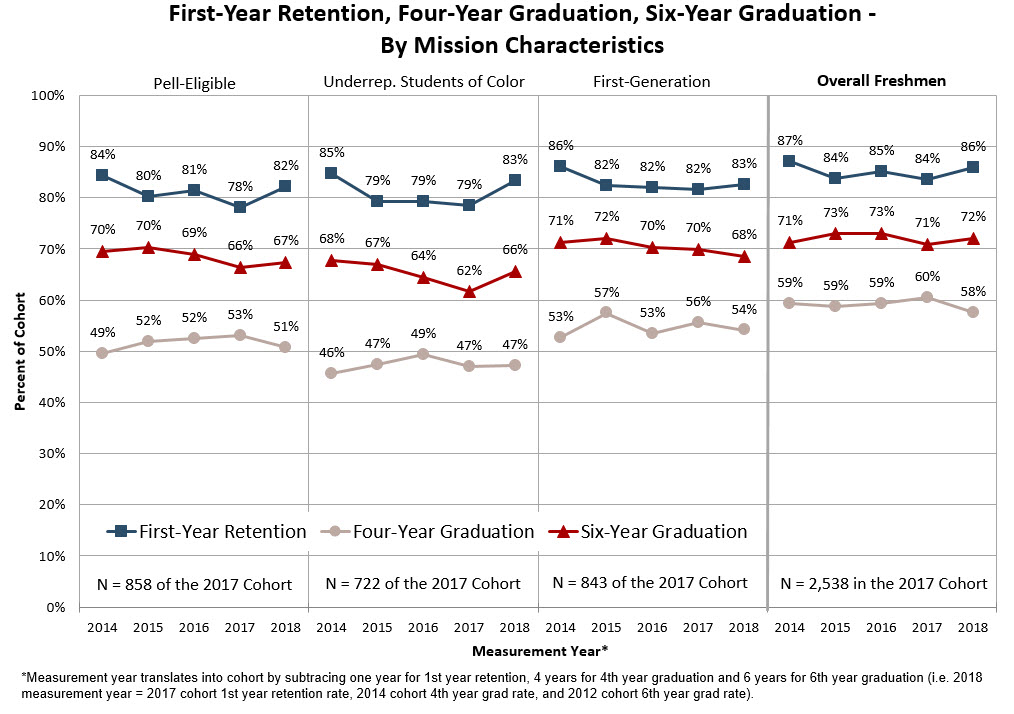Nationally, some groups of students tend to have lower retention and graduation rates based on demographic and background characteristics. These populations include federal Pell Grant eligible students (a primary indicator for low-income); first-generation students; and/or underrepresented students of color (African-American, Hispanic/Latino, and American Indian). However, many of these students who are at higher risk for attrition by national and state standards do very well at DePaul.
For example, a 2011 report from the Higher Education Research Institute (HERI) reveals that first-generation students graduated from four-year institutions at a rate of only 27 percent in four years and at a rate of 50 percent in six years.* DePaul’s graduation rates for first-generation students exceed these national rates by significant margins; in 2018, first-generation students had a four-year graduation rate of 54 percent and a six-year graduation rate of 68 percent.
Despite DePaul’s noteworthy retention and graduation outcomes for students at higher risk, it is important to keep in mind the challenges these students face in navigating a large complex institution and affording private post-secondary education. DePaul's Vincentian mission and promise compels continuous support for these students.
Click the image below to enlarge.
 * Source: Higher Education Research Institute (HERI), Completing College: Assessing Graduation Rates at Four-Year Institutions, 2011
* Source: Higher Education Research Institute (HERI), Completing College: Assessing Graduation Rates at Four-Year Institutions, 2011
Learn More
Read DePaul's "Trends in Freshman Retention and Graduation" annual report.
Download